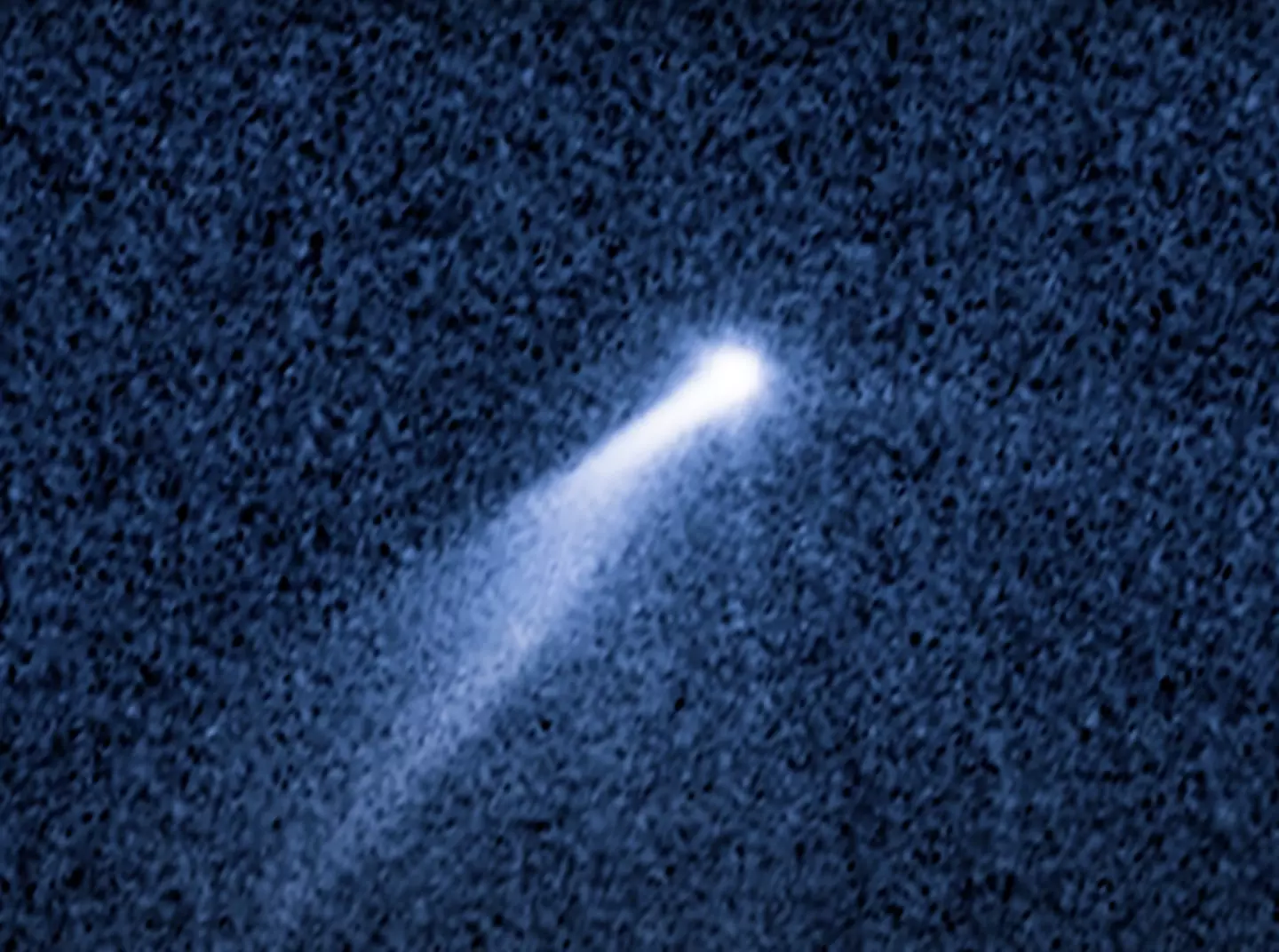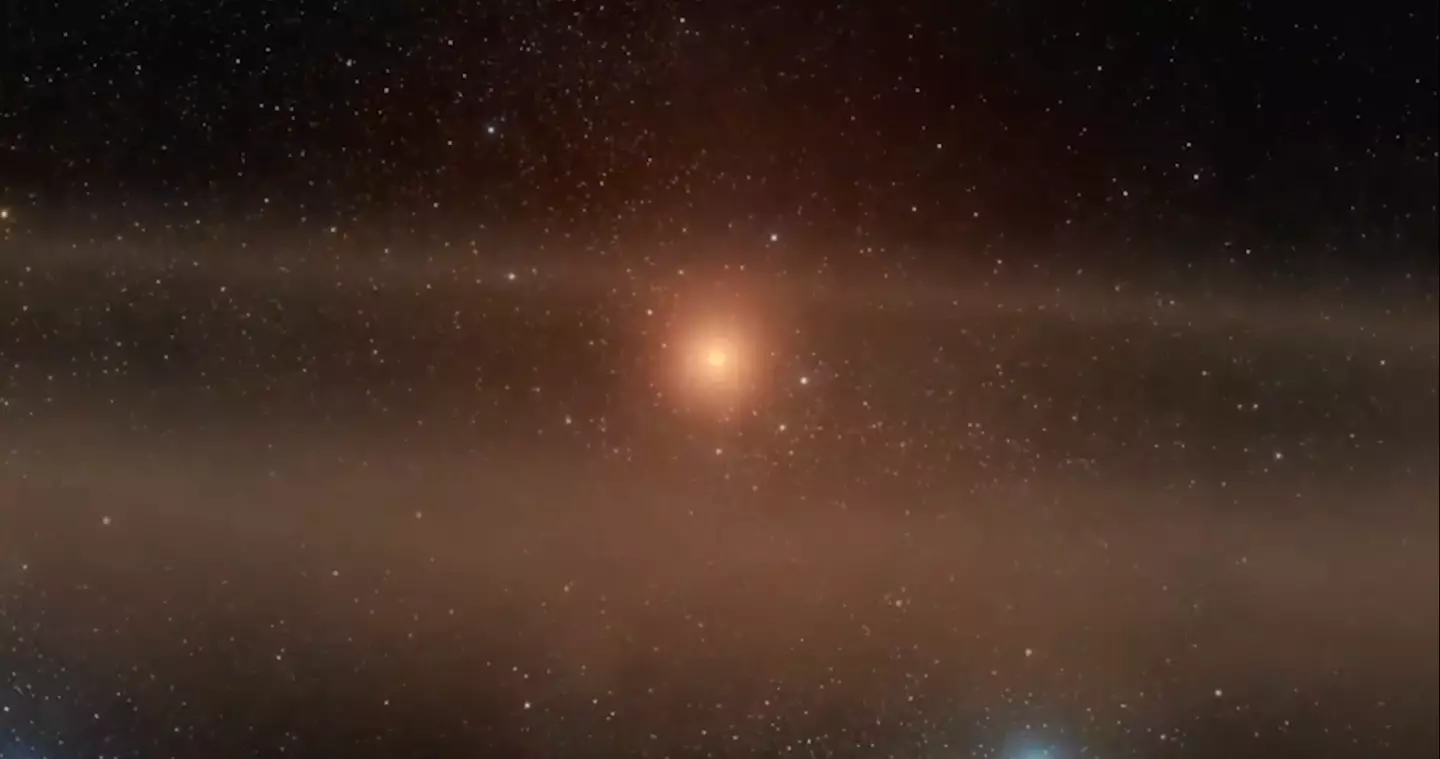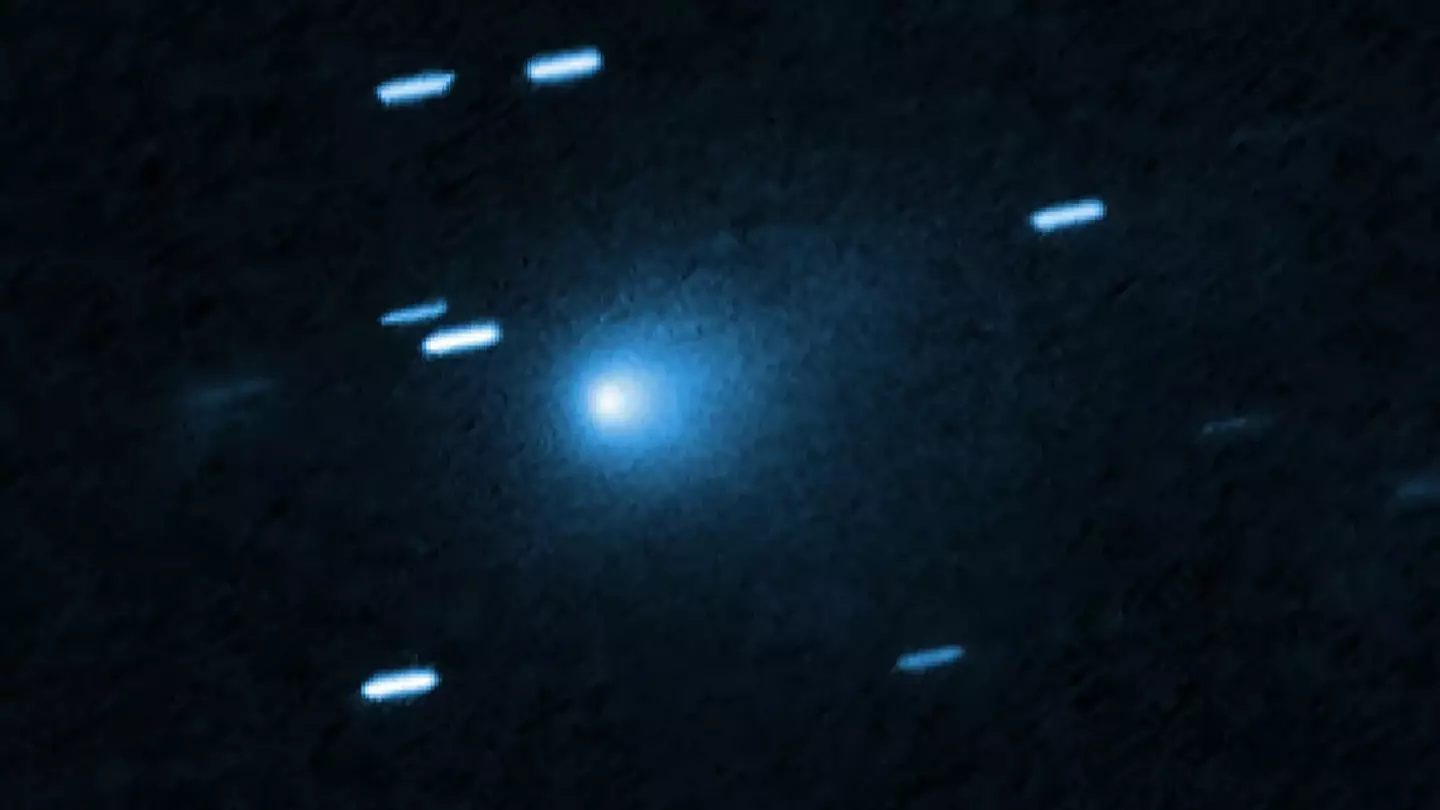Scientists recently made an intriguing discovery using the Hubble Space Telescope, documenting the fastest-known object to travel through our solar system. This object, dubbed ‘Comet 3I/ATLAS’, was initially detected on July 1 by the Asteroid Terrestrial-impact Last Alert System (ATLAS). It marks the third interstellar visitor to our solar system in the past eight years.
Prior interstellar objects, such as “Oumuamua and Comet 2I/Borisov, were recorded at slower speeds and appeared smaller in size compared to Comet 3I/ATLAS.
“This latest interstellar tourist is one of a previously undetected population of objects bursting onto the scene that will gradually emerge,” stated David Jewitt from the University of California, who led the science team for the Hubble observations.
“This is now possible because we have powerful sky survey capabilities that we didn’t have before. We’ve crossed a threshold,” Jewitt added.
Jewitt did caution that the origins of the comet remain a mystery. “No one knows where the comet came from. It’s like glimpsing a rifle bullet for a thousandth of a second. You can’t project that back with any accuracy to figure out where it started on its path,” he explained.

Despite Comet 3I/ATLAS’s incredible speed, historical comets from 1680 and 1843 were likely even faster, according to IFLScience, due to the vast expanse they traveled towards the Sun.
The Hubble Telescope’s observations also revealed the comet’s outgassing—gas release due to heat—but this made it challenging to accurately determine the size of its nucleus. Current estimates suggest the nucleus is between 5.6km and 320m in size, equivalent to 3.5 miles and 1,000 feet. In comparison, Oumuamua’s longest axis was estimated between 100 and 1,000m, and Borisov’s nucleus was less than half a kilometer.
While the star system of its origin remains uncertain, scientists speculate it might have come from the thick disk of the Milky Way, which is located above and below the galaxy where the spiral arms and the Sun are found.
To further investigate, future studies using the James Webb Space Telescope, the Transiting Exoplanet Survey Satellite, Swift, and various ground-based observatories will measure the water content of the comet.
Comet 3I is anticipated to approach within 210,000,000km of the Sun by October 30, and it will be visible from Earth until next month, with a reappearance expected in December.
Regarding Comet 3I’s peculiar nature, Harvard physicist Avi Loeb expressed concerns in a paper published on Medium.

“There were claims of a tail,” he noted. “But since 3I/ATLAS is accelerating and its current size is not much larger than the angular resolution of Earth-based telescopes, it is not easy to avoid fictitious elongation of the image as a result of the object’s motion.”
Loeb also raised questions about the lack of detectable gas emissions from the object and argued that its trajectory fits too perfectly within the solar system. He applied the ‘Loeb Scale’ to assess whether the object is of natural or artificial origin, ultimately scoring it a six out of 10.
This assessment suggests the possibility of the comet being engineered, opening up discussions about potential alien involvement.

